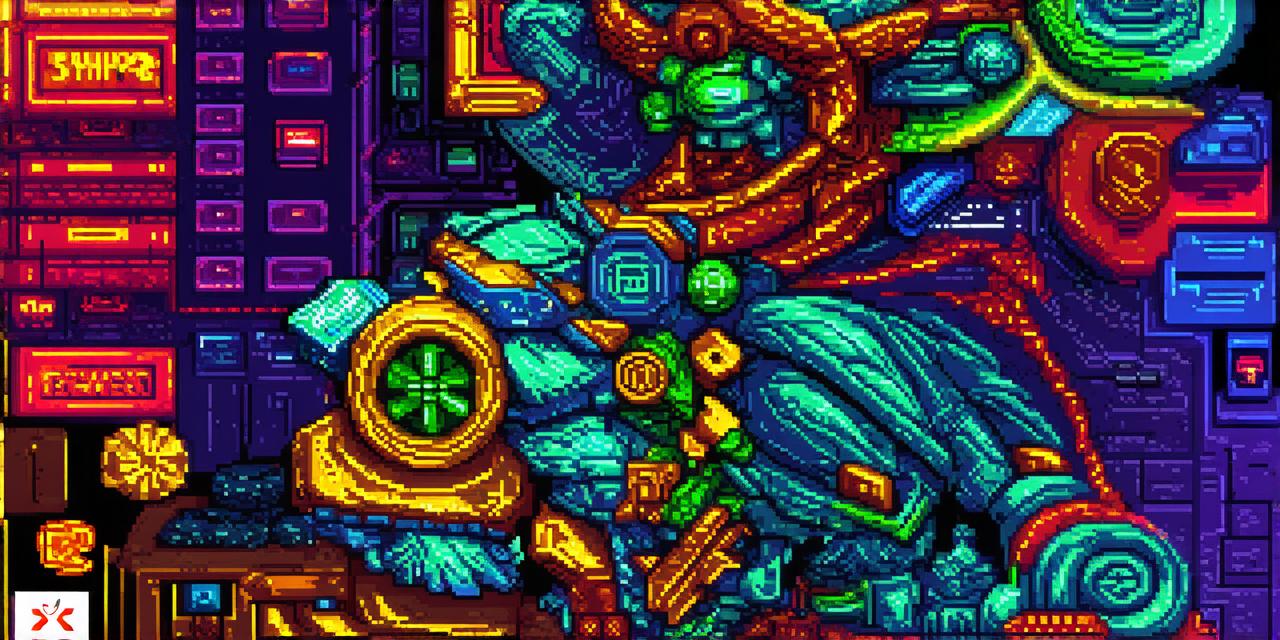Chapter 1: Pre-Production
Creating a successful video game involves several stages, including pre-production, production, post-production, and marketing. In this guide, we will discuss each stage in detail to help you create a game that resonates with your target audience.
Chapter 2: Identifying Your Target Audience
Knowing your target audience is essential for creating a successful video game. You need to understand their preferences, interests, and gaming habits to create a game that resonates with them.
Conduct Market Research
Market research involves gathering data on the gaming industry, including trends, consumer behavior, and preferences. This information will help you understand what type of game is in demand and what features players want in a game.
Analyze Competitors
Analyzing your competitors can provide valuable insights into the gaming industry and help you identify gaps in the market. You can analyze their games’ features, target audience, pricing, and marketing strategies to understand what works and what doesn’t.
Create a Persona
Creating a persona involves creating a fictional character that represents your ideal player. This character should have specific demographic information such as age, gender, location, and interests. By creating a persona, you can tailor your game to meet the needs and preferences of your target audience.
Test Your Game with Potential Players
Testing your game with potential players is an excellent way to gather feedback on gameplay mechanics, graphics, and user experience. This feedback will help you identify areas for improvement and refine your game before launching it to the public.
Chapter 3: Developing a Concept for Your Game
Developing a concept for your game is critical for creating an engaging and immersive experience for players. The following are some steps you can take to develop a concept for your game:
Brainstorm Ideas
Brainstorming ideas involves generating a list of potential concepts for your game. This process should be done with an open mind, and all ideas should be considered, regardless of feasibility or complexity.
Narrow Down Your Concept
Narrowing down your concept involves selecting the best idea from your list of potential concepts. This process should be done with a critical eye, considering factors such as market demand, competition, and feasibility. You can also use storytelling techniques to develop a narrative that resonates with your target audience.
Create a Game Design Document
A game design document is a detailed blueprint that outlines the game’s requirements, goals, target audience, and budget. It serves as a reference for the entire team during the development process and helps ensure that everyone is on the same page.
Prototype Your Game
Prototyping your game involves creating a functional version of your game that you can test with potential players. This process allows you to gather feedback on gameplay mechanics, graphics, and user experience, which can help you refine your concept before moving on to the next stage.
Chapter 4: Creating a Storyboard and Prototype
Creating a storyboard and prototype is an essential part of the video game design process. It allows you to visualize how the game will flow and identify potential problems before moving on to the development stage.
Create a Storyboard
A storyboard is a visual representation of the game’s narrative that outlines the sequence of events, characters, and locations in the game. It helps you visualize how the game will flow and identify potential problems before moving on to the development stage.
Create a Prototype
A prototype is a functional version of your game that you can test with potential players. It allows you to gather feedback on gameplay mechanics, graphics, and user experience, which can help you refine your concept before moving on to the development stage.
Test Your Prototype
Testing your prototype involves gathering feedback from potential players on gameplay mechanics, graphics, and user experience. This feedback will help you identify areas for improvement and refine your concept before moving on to the development stage.
Chapter 5: Production
Production involves creating the actual game assets such as characters, environments, and sound effects. This stage also involves writing and testing game code, which ensures that the game functions as intended.
Assemble Your Team
Assembling your team involves hiring professionals such as artists, programmers, and writers who have experience in the gaming industry. You should also consider outsourcing certain tasks if necessary, such as sound effects or music composition.
Create Game Assets

Creating game assets involves creating characters, environments, and other visual elements for your game. This process should be done with attention to detail and consistency to ensure that the game has a cohesive look and feel.
Write and Test Game Code
Writing and testing game code involves programming the game’s mechanics, ensuring that the game functions as intended, and fixing any bugs or glitches. This process should be done with rigor and attention to detail to ensure that the game is stable and reliable.
Conduct Quality Assurance
Conducting quality assurance involves testing the game for any remaining bugs or issues that may have been missed during development. This process ensures that the game is polished and ready for release.
Chapter 6: Post-Production
Post-production involves refining the game based on feedback from beta testers and players and marketing and distributing the game to the target audience. The following are some steps you can take to complete post-production for your game:
Refine Your Game
Refining your game involves incorporating feedback from beta testers and players to improve the game’s mechanics, graphics, and user experience. This process should be done with an open mind and a willingness to make changes to ensure that the game is the best it can be.
Market Your Game
Marketing your game involves creating a marketing strategy that will help you reach your target audience and generate interest in your game. This can include social media advertising, influencer partnerships, or traditional advertising methods such as print or radio ads.
Distribute Your Game
Distributing your game involves making your game available to players through various platforms such as Steam, the App Store, or Google Play. You should also consider whether to release your game for free or at a cost and what pricing strategy will work best for your game.



